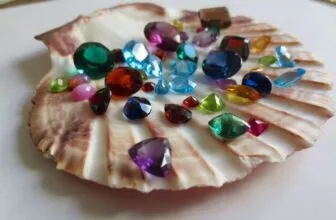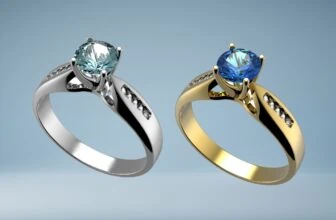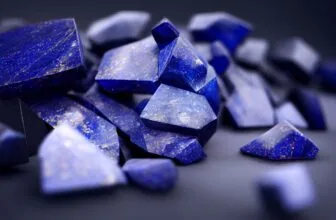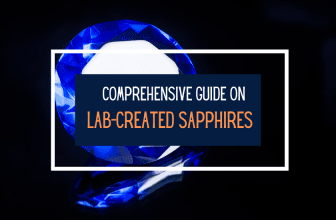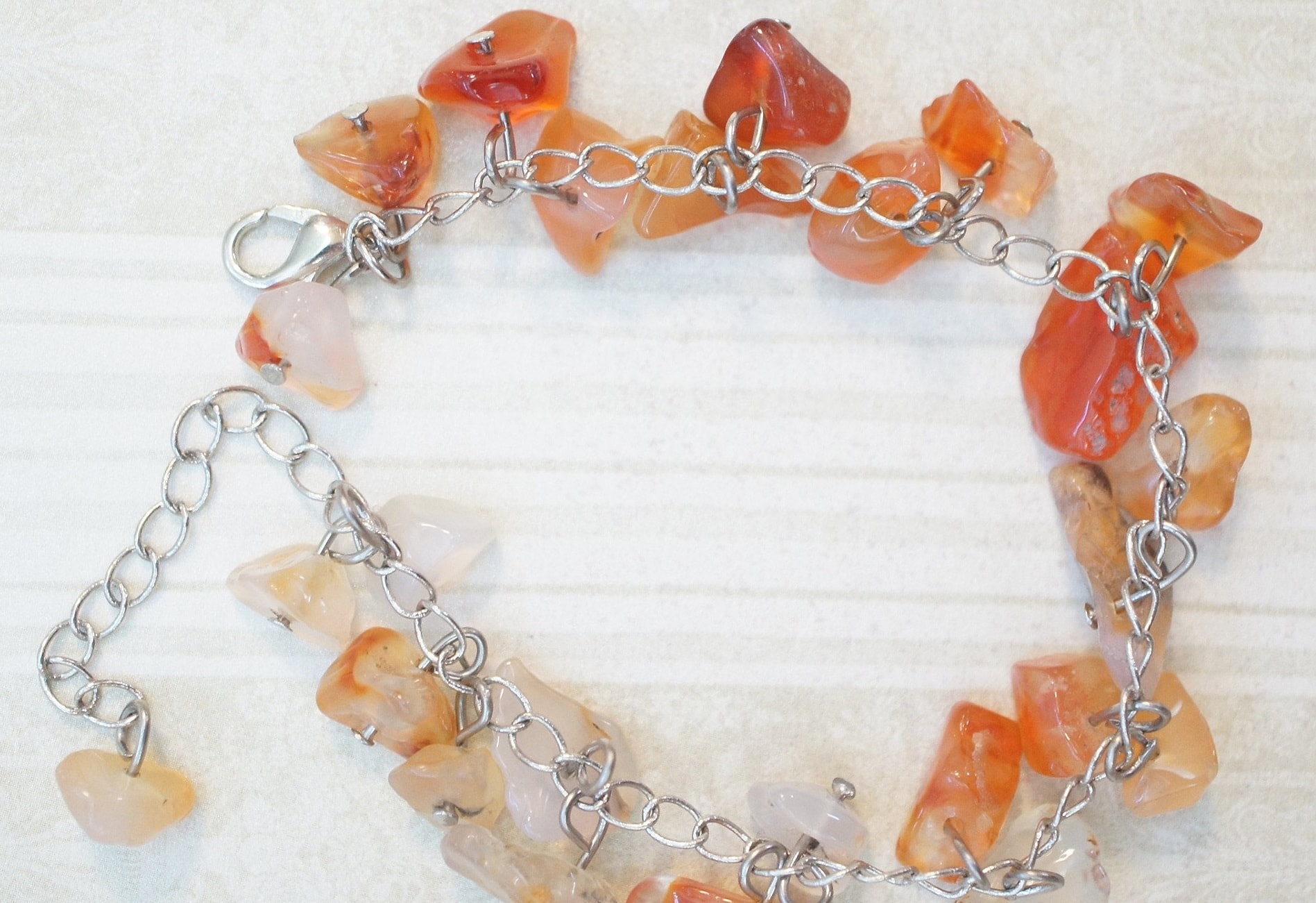
Table of Contents
The carnelian gemstone also called cornelian, and often referred to as sard is a semi-precious gemstone that’s frequently used in jewelry. Carnelian is easily recognized, with its orange-red color and smooth luster.
This ancient gemstone has been a part of jewelry pieces for millennia. While not as valuable as it once was, carnelian still remains a beautiful stone that makes for intriguing jewelry.
If you’re looking to buy carnelian, here’s a complete guide to help you with the process.
What is Carnelian?
A variation of the silica mineral chalcedony, the carnelian gemstone has its orange or reddish color due to the iron oxide impurities in it. Depending on how much iron oxide there is in the individual stone, the color can range from pale orange to an intense, nearly black coloration.
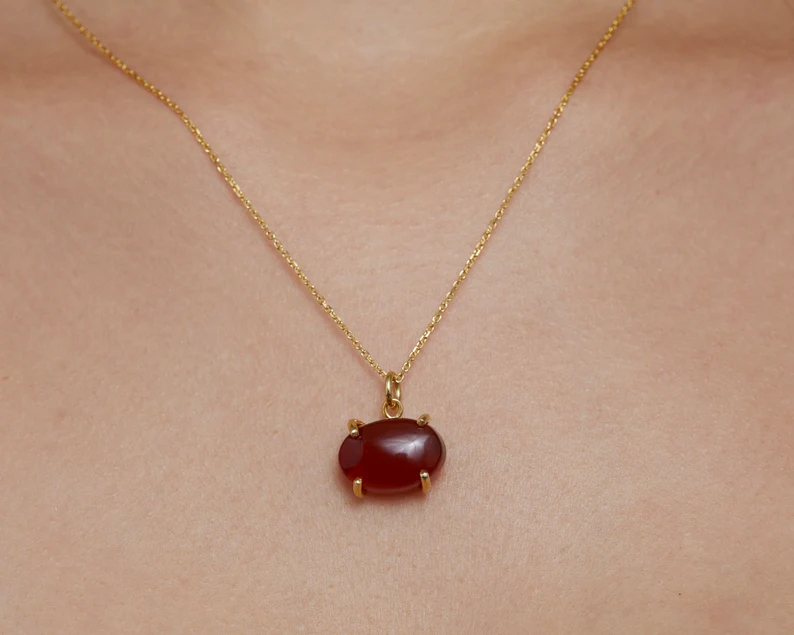
Carnelian is one of the oldest gemstones and dates back several thousand years. One of the first carnelian gemstone cuts in history was found in the Varna Chalolithic necropolis, Bulgaria, and dates back to the middle of the 5th millennium BC – approximately 6,500 years ago. It was a carnelian bead with 32 facets (16 on each side of the bead). Since then, carnelian jewelry has been found in many other places in the Balkans, in Greece, and across the rest of the ancient world and the Middle East.
The word carnelian or cornelian comes from the Medieval Latin word “corneolus” which itself came from the Old Latin word “cornum” – cornel cherry. Presumably, the name was chosen because the carnelian stones resemble those translucent red fruits.
Nowadays, the main source areas of this gemstone are Brazil, India, the U.S., and Uruguay.
Carnelian vs. Sard: What’s the Difference?
Carnelian and Sarde are both types of chalcedony but they have different features. Carnelian stands out with its bright orange to red-orange colors. It’s often see-through and gets its intense color from iron impurities.
Sarde, or Sard, has a more brownish-red look and is usually less clear, sometimes even opaque. In ancient times, people used both for engraved gems and jewelry, but Carnelian was more popular for its eye-catching color.
Nowadays, both stones are popular in jewelry making, but Carnelian’s vibrant hues make it a favorite among gem lovers and collectors.
Carnelian Color
Carnelian comes in a variety of orange to red hues, from faint to vivid. While dynamic, vibrant hues are generally more desirable, there is no specific carnelian gemstone color that’s valued more than the others.
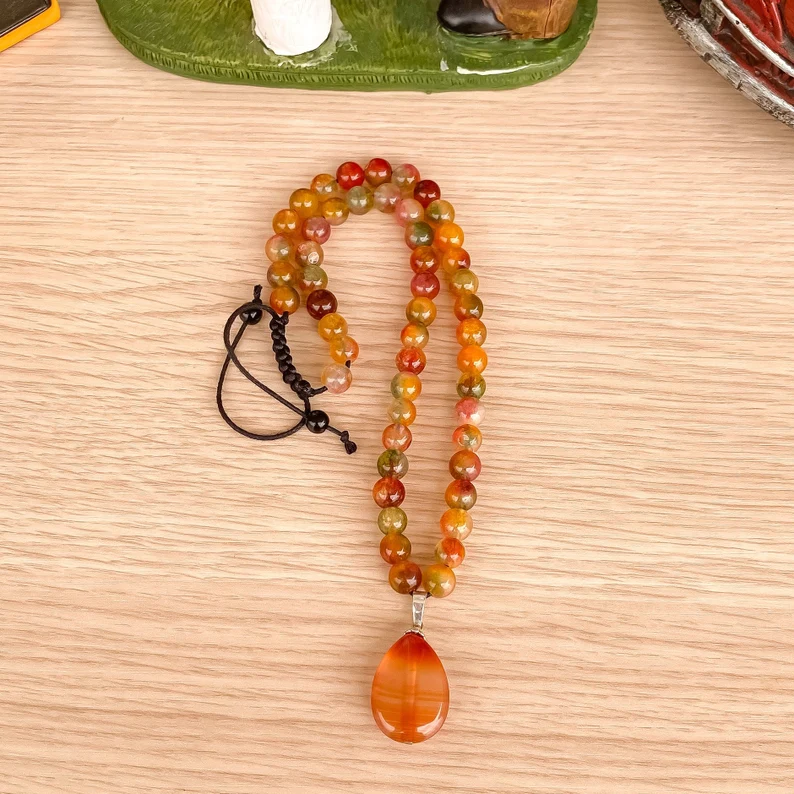
Both light orange and dark red carnelian gemstones are equally priced and valued, so the choice between them is purely cosmetic and subjective. Choose the carnelian color that you think looks best on you.
Carnelian Clarity
Carnelian is almost always translucent but can also be opaque at times. It has an attractive vitreous to waxy luster, which gives the stone a beautiful appearance. Carnelian’s luster brings out the color of the stone and makes you want to reach over and touch the smooth stone.
While generally free of inclusions, the stone can appear cloudy. If you hold a light against a carnelian, you’ll notice that the transparency of the stone is irregular, with parts of the stone appearing cloudier than others.
Carnelian Cut
Carnelian gemstones are usually cut in smooth cuts, beads, or cabochons, which accentuates their smoothness and color. But it can also be cut faceted into various shapes, such as round, oval, square, or rectangular.
Carnelian gemstones can even be cut into homogenous figurines and small statues if the cutter so chooses. Either way, as a quartz gemstone, carnelian is not too hard to cut which leaves a lot of freedom for creativity and experimentation.
A well-cut and well-polished carnelian gemstone will have a beautiful shape, will reflect light off its surface quite effectively, and can make either a great jewelry gemstone or a beautiful piece of ornamentation in and of itself.
Carnelian Carat Weight
Carat weight measures how much a gemstone, including diamonds, weighs. One carat equals 200 milligrams and breaks down into 100 smaller units called points. So, a 50-point gem weighs 0.50 carats. Carat weight plays a big role in a gemstone’s value, but it doesn’t always match the gem’s size.
Different densities and cuts can make two gems of the same weight look different in size. For example, a well-cut diamond might appear bigger than another diamond of the same weight if its cut isn’t as good.
Remember, carat weight is important for a gemstone’s value, but it’s not everything. The cut, color, and clarity are also crucial in determining a gemstone’s overall beauty and worth.
Carnelian Gemstones in Jewelry
As with other opaque silica gemstones, carnelian jewelry is quite affordable making it ideal for daily jewelry pieces. It adds a burst of color to any outfit and tends to stand out beautifully against any skin tone.
Carnelian looks beautiful in both silver-hued and yellow gold metals. When set in yellow gold, carnelian takes on a vintage charm as the two colors complement each other perfectly. However, silver metals accentuate the color of the stone and add perfect contrast.
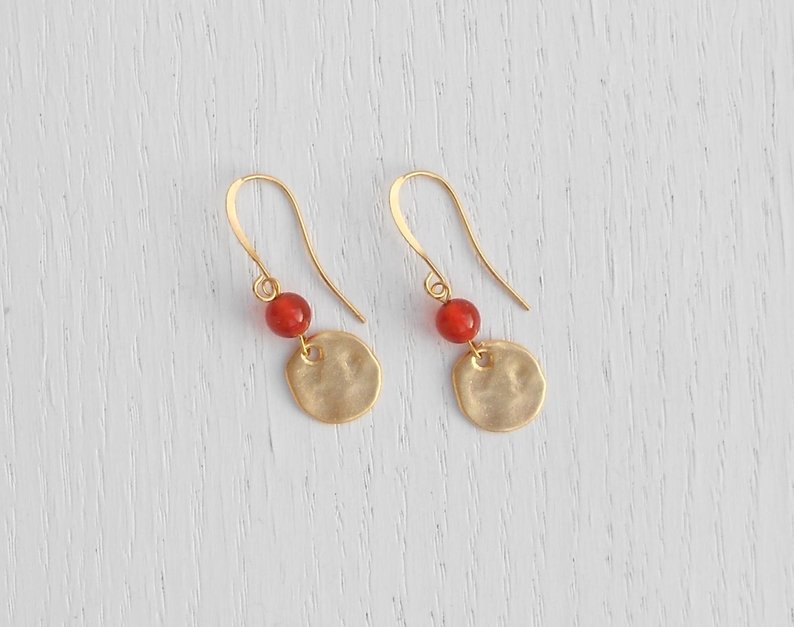
The gemstone also suits a range of styles, be it casual and bohemian or classy and formal. This depends on the setting and the skill of the designer. It also pairs well with more expensive materials, such as gold and diamonds, which can make for stunning and unique jewelry designs. This is why you’ll find carnelian jewelry ranging from a few dollars to thousands of dollars.
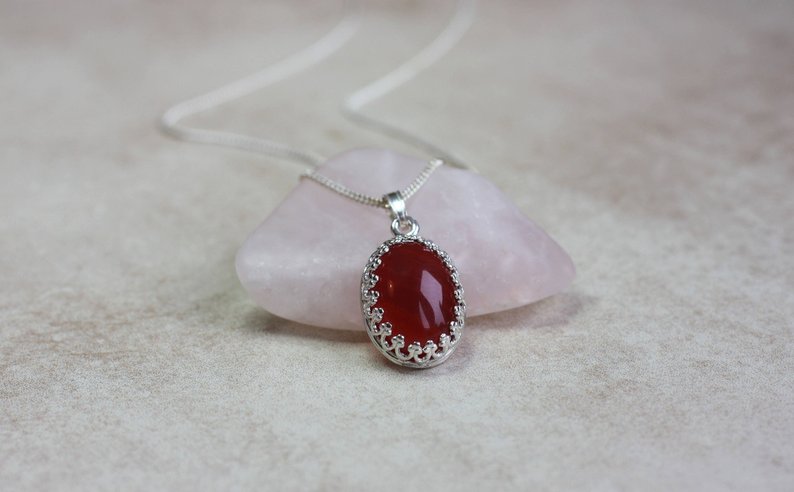
Carnelian stones can be used in anything from rings and earrings to bracelets, pendants, necklaces, and rings. With a hardness of 6.5 to 7 and very good wearability, the carnelian stone actually makes for a very long-lasting and sturdy jewelry stone – when maintained and cared for properly, it can last in top condition for a very long time.
Our readers sometimes ask us whether carnelian makes for a good engagement ring stone. It is an excellent alternative gemstone to engagement rings, but it might not be for everyone.
The trouble with engagement rings is that it’s a pieces of jewelry that you’ll be wearing frequently, if not every day. As such, it needs to be durable enough to withstand regular exposure. Carnelian is a relatively soft gemstone, compared to engagement ring staples such as diamonds, sapphires, and rubies, and will require careful maintenance to keep it from scratches and fracturing.
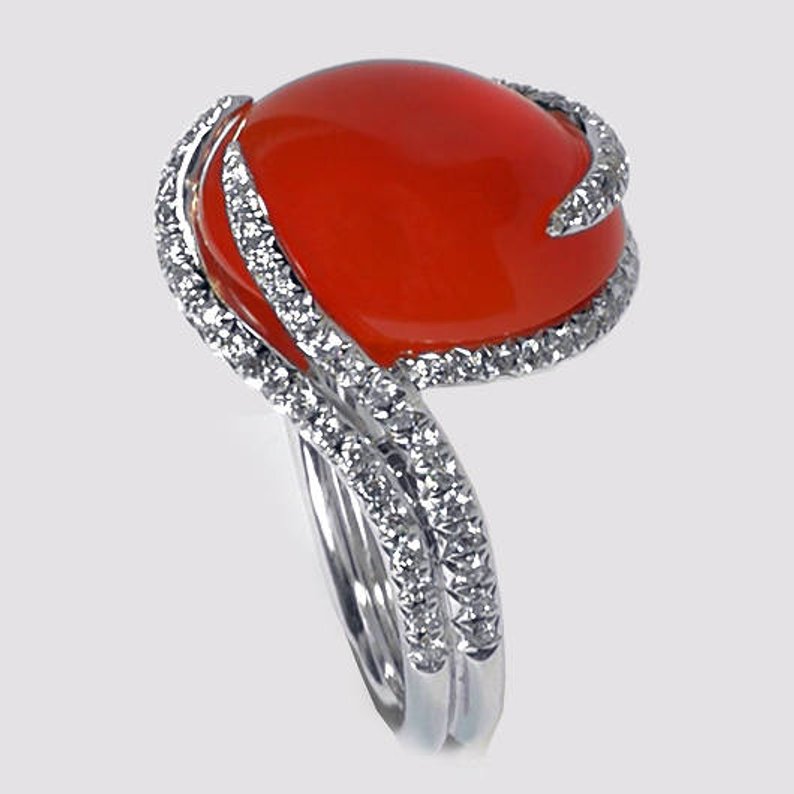
It’s important to set your carnelian in a protective setting like a bezel or halo and to remove it whenever engaging in vigorous activity. While we don’t recommend carnelian for engagement rings, if your heart is set on it, it’s not impossible to make it work.
History of Carnelian
Carnelian, with its bright orange-red colors, has been important since ancient times. Early civilizations valued it for both its beauty and believed protective powers. The ancient Egyptians especially treasured carnelian. They thought it protected the dead in the afterlife and used it a lot in jewelry and amulets. They even carved carnelian into signet rings for official documents.
Other ancient cultures also loved carnelian. The Greeks and Romans used it for engraved gems, and in the Middle East, people believed it brought peace and prevented anger and envy. In India, carnelian has been part of Ayurvedic medicine for a long time, thought to boost passion and desire.
Carnelian’s popularity has lasted for centuries, often linked to autumn in art and jewelry. Today, people still seek out carnelian for its history and bright color. Its lasting charm comes from its mix of beauty and the mystical qualities people have believed in over the years.
Is There Enhanced or Imitation Carnelian?
Most carnelians on the market are untreated, but sometimes these stones can be subject to heat treatment to enhance their natural color.
Additionally, you can also encounter certain “carnelian” stones on the market that are little more than dead white chalcedony stones or lightly colored agate. You can usually tell these apart by holding up the stone to a source of light. If the stone displays an internal striped pattern, it’s usually dyed agate. Natural carnelian is cloudy inside, with no patterns.
Carnelian itself is rarely used as an imitation of other stones but it can sometimes be mistaken for fire opal or amber. Fire opal is usually brighter in color and more transparent, however, while amber is significantly softer.
Carnelian Gemstone Meaning and Symbolism
The carnelian gemstone is widely regarded as a stone of motivation and endurance, as well as of courage and leadership. Its warmth and bold energy are beloved by timid speakers who need the courage to go out in front of large audiences, and they were also the favorites of fierce warriors that were heading into battle.
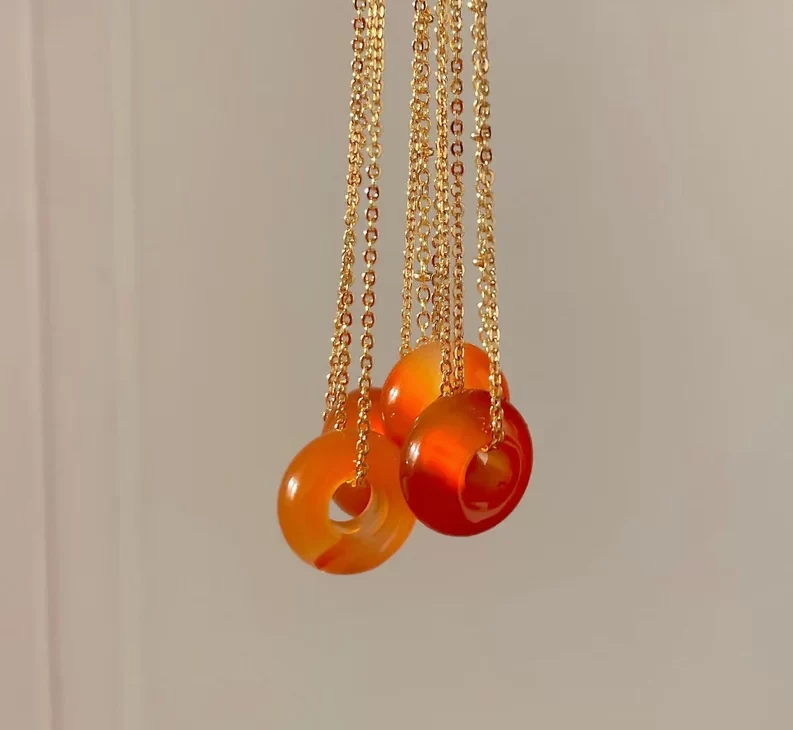
Ancient Egyptian architects used to carry carnelian stones as a sign of their high rank, while alchemists in the Middle Ages used carnelian as a boiling stone for other chalcedonies in order to activate their energies. Called “The Setting Sun” by the ancient Egyptians, the carnelian was also identified with female energy and was associated with the fertile blood of Isis, the Egyptian Mother goddess.
Today, it continues to be valued by those who believe in crystal healing.
How to Take Care of Carnelian Jewelry
Speaking of caring for carnelian jewelry, let’s go over the basics. The best way to keep the stone clean is to use warm soapy water and a soft cloth. After washing the piece, make sure that it’s carefully dried and stored. Avoid using ultrasonic cleaners as these can cause fractures or chips.
When storing carnelian, keep it away from harder gemstones like diamonds or sapphires. Since the carnelian is typically cut in beats or cabochons, its smooth, round surface can easily be scratched when enough pressure has been accidentally applied. If you have to store your carnelian gemstones in the same jewelry box as other pieces, it’s smart to make sure that it’s well wrapped up in a piece of cloth.
Take off carnelian rings or bracelets when doing activities such as swimming, gardening, or cleaning. This will keep it away from exposure to knocks and bumps as well as harsh chemicals.
Where to Buy Carnelian Jewelry
Carnelian is a beautiful gemstone, but it may be difficult to find many options at a local jeweler. Specialist gemstone shops often carry carnelian jewelry and are perfect to check at if you prefer purchasing your carnelian in person.
However, if you take your search online, you’ll be able to check out endless options and competitive prices. The important factor is to opt for a vendor that is trustworthy, with excellent customer reviews, customer service, and good after-sales policies. You want a vendor that stands by their products and will take them back if there’s an issue, so check the returns policies before you buy.
We recommend searching on the following platforms:
- Etsy is a platform where you can find unique, handmade carnelian jewelry. These range in price and style, so take the time to search through them to find the right piece for you.
- As Amazon is one of the biggest online retailers worldwide, it’s not surprising that you can find all kinds of carnelian jewelry here. The range is extensive and will take some time to go through, but it’s well worth it.
Wrapping Up
Carnelian jewelry, known for its deep, warm colors and rich history, is more than a simple accessory. It brings ancient traditions and beliefs into modern times. Loved for both its beauty and mystical qualities, carnelian still charms and fascinates today, making it a timeless choice for anyone who values both looks and history in their jewelry.


